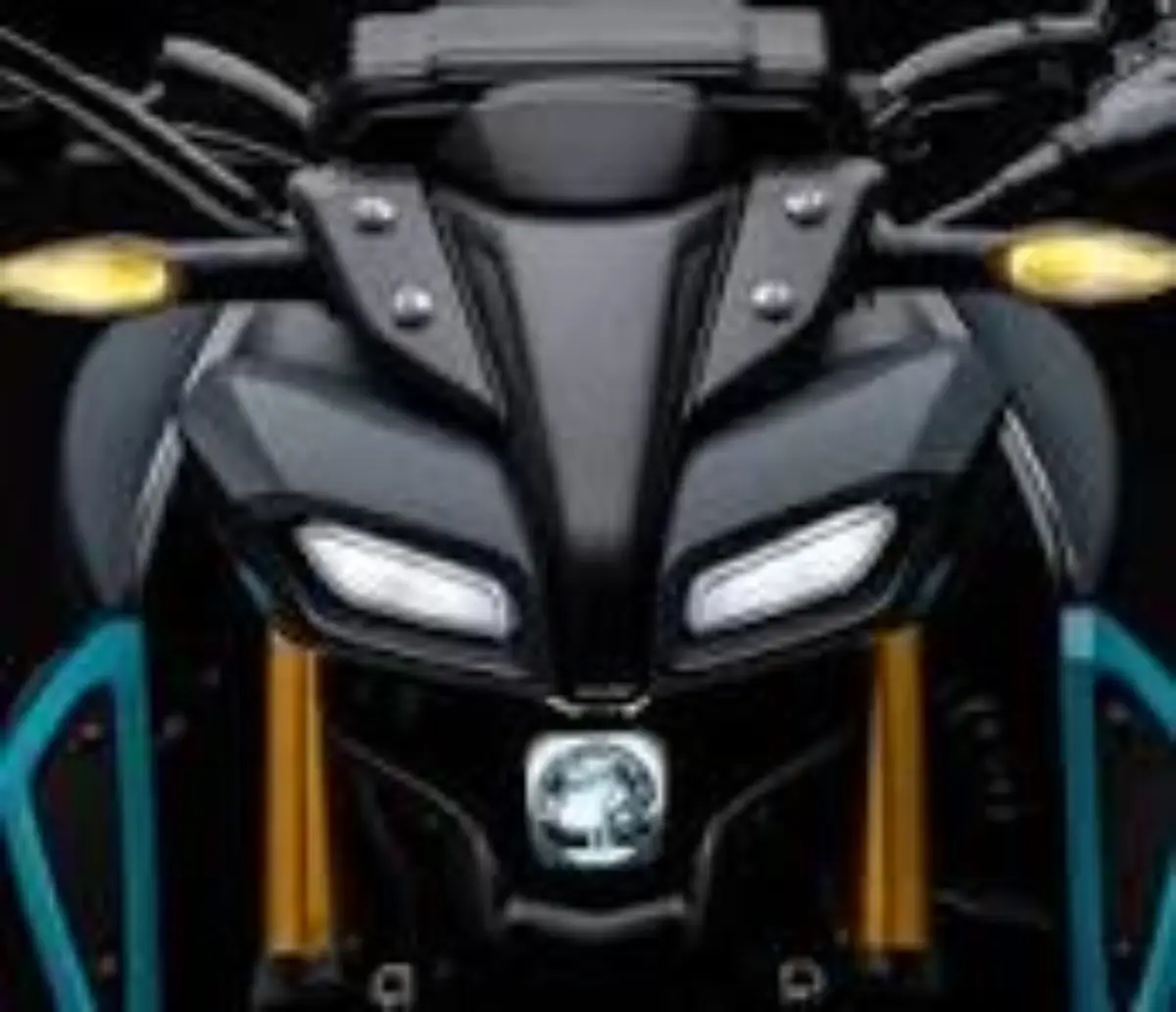Yamaha MT-15:Is there a need for an introduction to the Yamaha MT-15? It recently received an update and is the R15 V4’s street-bare sibling. The so-called MT-15 version 2.0 has a few noteworthy changes that significantly alter the motorcycle’s appearance and ride.
Yamaha MT-15 DESIGN AND FEATURES
The body panels of the Yamaha MT-15 version 2.0 are identical to the original model. Our test bike’s cyan blue paint job makes it stick out among other motorcycles, and the coloured wheels only serve to accentuate the design. There are more, more subdued colours of the Yamaha MT-15 if you think this is too flashy. In my opinion, the Yamaha MT-15 appears noticeably better than the previous model because the new USD fork gives the front end a more muscular appearance and the colours add to the machine’s character.
Moving on, the Yamaha MT-15 version 2.0 now has additional updates such as a reverse LCD instrument cluster with Bluetooth connectivity that shows the phone’s battery level, missed or incoming call alerts, and SMS and email notifications—all without the need for navigation prompts.
Although I appreciate all of the aforementioned updates, I wish Yamaha had given quality more thought. During our testing, an indicator stalk at the front worked itself loose, and some of the plastic wasn’t up to par. Not to mention how annoying it is that the indicator and horn switches are positioned in the wrong positions.
RIDE AND HANDLING
A USD fork was one of the most significant updates for the Yamaha R15 version 4.0, and we are happy to see that the Yamaha MT-15 version 2.0 also received the same unit. In actuality, the most recent MT-15 model has the same aluminium swingarm as the R15 version 4.0, in contrast to the previous model, which received the inferior cousin treatment by being equipped with a less expensive box section swingarm. In addition to these adjustments, the wheelbase has been shortened by 10 mm as a result of the USD fork’s new mounting location. The way this motorcycle rides and handles has significantly improved as a result of all of the previously mentioned modifications.
While navigating the uneven roads of Mumbai, one notices that the suspension is somewhat rigid, yet it doesn’t feel unnatural. Better feel and feedback from the front end, particularly around corners, is the trade-off, though. This lets you go faster because the bike feels more firmly planted and stays on the intended course.
The new bike feels much more confident than the old one, which got a little uneasy when pushed too hard. Even abrupt direction changes are handled with greater dexterity than previously.
The deft handling of this Yamaha really makes manoeuvring through city traffic a breeze. And the wide handlebar’s additional leverage, tight turning radius, and precise steering are all to blame for that.
Regarding the brakes, the front brakes have good bite and feedback, but I don’t understand why Yamaha still won’t provide ABS for the rear. One could lose control if their rear wheel locked during panic or emergency braking due to India’s poor road conditions and riders’ tendency to apply the brakes frequently. This expensive of a bike ought to have dual-channel ABS, end of story.
PERFORMANCE AND FUEL ECONOMY
The engine of the Yamaha MT-15 has always been a true gem, and we adore its amazing refinement. Only a slight buzz appears through the pegs and bars as you approach the redline; otherwise, it stays smooth for the majority of the rev range.
Speaking of, you won’t have to go to that part of the city’s rev band. You can drive in traffic in fourth gear at 20 kph without the engine complaining because the 52-teeth rear sprocket is larger than the 48-teeth sprocket on the R15. Its exceptional fuel efficiency within the city can be explained by this kind of tractability. Delivering more than 50 kpl in the city is amazing for a performance-oriented 155cc, four-valve liquid-cooled engine. With today’s absurd fuel prices, this is the kind of fuel efficiency that will keep your wallet happy at the pump. On the highway, the fuel efficiency increases to 56 kpl, which is still a very respectable figure.
The engine of the MT-15 version 2.0 produces 0.2 Nm more peak torque but slightly less power than the BS4 model. The bike’s curb weight has also increased by 1kg. The MT-15 is marginally faster than the R15 V4 up to 60 kph, but the R15 is roughly 0.5 seconds faster up to 100 kph. Taking into account the variations in sprocket sizes, this makes sense.
All things considered, the engine sounds busy on the highway, with the revs sitting at 8,000 rpm at 100 kph, because the gearing is so biassed towards riding in the city. Expectedly, the top speed is around 130 kph, which is slower than the R15, but as you get over 120 kph, the performance starts to wane.
VERDICT
Even now, the MT-15 version 2.0 is an excellent tool for navigating the bustle of the city. People searching for an incredibly enjoyable commute will be immediately drawn to it because of its lively engine, low curb weight, and agile handling. It is more expensive than the previous bike, but I believe the cost is reasonable. The KTM 125 Duke, which is less powerful and features-rich than the MT-15, costs Rs 15,000 more than the outgoing bike, but even at Rs 1.6 lakh (ex-showroom), it is still quite affordable.
Want a street naked that is well-built, efficient with fuel, and has enough performance for the city? The Yamaha MT-15 version 2.0 is simply the best option available.
Yamaha MT-15 Review On You-Tube
Also Read: Maximise Your Riding Experience with the Honda H’ness CB350
Share to Others